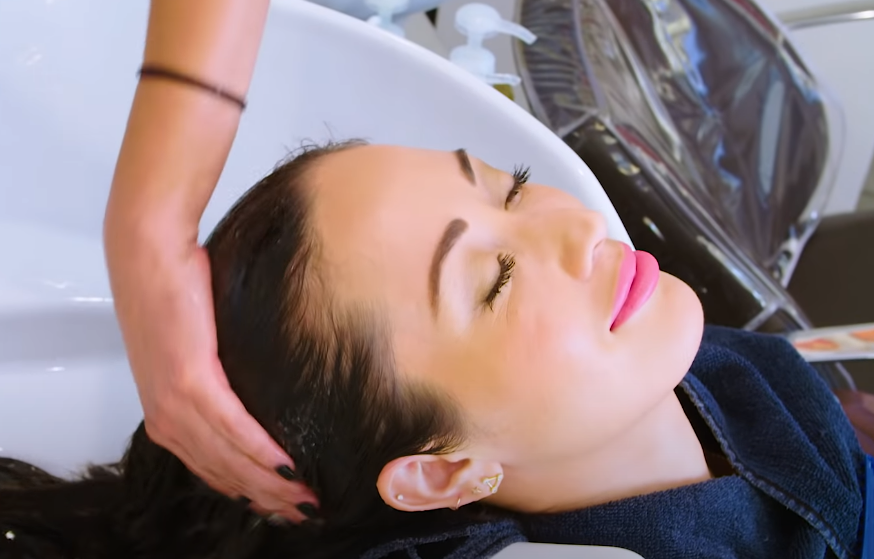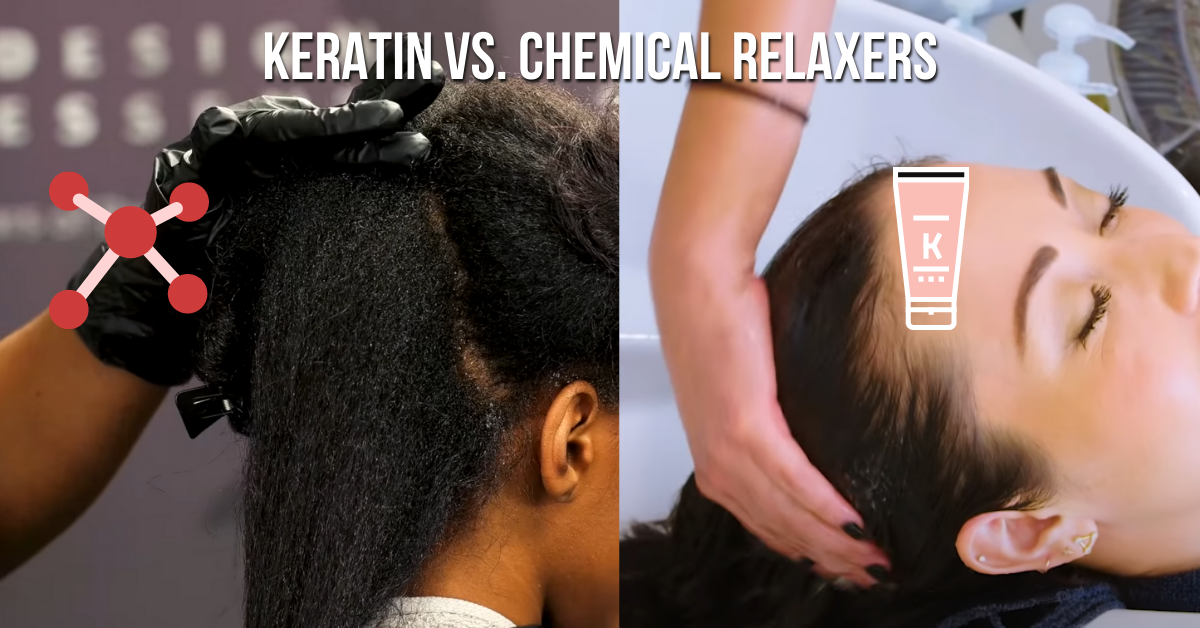Permanent hair straightening is a common option for people looking to have long-term straightened hair. We’ve even previously talked about all four different kinds of permanent hair straightening. But today, we will be talking about two, in particular, keratin treatment and chemical relaxers.
In this article, we will explore the differences between keratin treatment and chemical relaxers, including how they work, their potential effects on the hair, and the level of maintenance required to maintain their results. Whether you’re looking to smooth frizz, tame curls, or achieve a straightened look, this article will provide you with the information you need to make an informed decision about the best hair straightening method for you.
Keratin Treatment
Keratin treatment, also known as a Brazilian blowout, is a hair straightening technique that uses a keratin protein solution to smooth and straighten the hair. The solution is typically made up of a combination of keratin, a protein that is naturally found in the hair, and other conditioning agents.
Because of this, keratin treatments are considered more natural than others that use harsh chemicals and can be seen as a better alternative.

Traditionally, the solution is applied to the hair by a stylist (or you if you use an at-home product) and is combed through your hair to ensure that the product is distributed correctly. Afterward, a flat iron or other heat-based straightening tool is used to seal in the product.
The heat helps to activate the keratin in the solution, which works to smooth and straighten the hair by filling in gaps and gaps in the hair cuticle. This results in smoother, frizz-free hair that can last for several months.
Professional keratin treatments cost anywhere between USD 200 to USD 800. Dependent on location, among many other factors.
Chemical Relaxers
Chemical relaxers, on the other hand, are, as the name implies, more reliant on chemicals.
There are two main types of chemical relaxers: lye-based relaxers and no-lye relaxers. Lye-based relaxers contain sodium hydroxide, a potent alkaline agent, while no-lye relaxers contain other chemicals such as guanidine hydroxide or lithium hydroxide.

To apply a chemical relaxer, a stylist will first shampoo the hair to remove any dirt or excess oil. Next, the relaxer solution is applied to the hair and combed through to ensure even distribution. The solution is left on the hair for a specific amount of time, depending on the strength of the relaxer and the desired level of straightening. The relaxer is then rinsed out, and the hair is neutralized with a neutralizing shampoo to stop the relaxing process.
Always remember chemical relaxers can be harsh on the hair and can cause damage, so it’s essential to use them with caution and follow the instructions carefully. The straightening effect of a chemical relaxer can last for several months or even up to a year, but regular touch-ups may be needed to maintain the straightened appearance of the hair.
A hair relaxing treatment at the salon can cost about USD 200, while an at-home treatment costs about USD 20.
Main differences between the two
One key difference between keratin treatment and chemical relaxers is the level of damage they can cause to the hair. Keratin treatment can be less damaging than chemical relaxers, as the keratin solution works to smooth and protect the hair rather than breaking down its structure. However, both methods can cause some damage to the hair, especially if they are not used correctly or if the hair is already damaged.
Anyone with damaged or overly stressed hair should avoid doing any type of permanent hair straightening without consulting a hair professional!
Another difference between the two methods is the level of maintenance required. Keratin treatment typically requires touch-ups every few months to maintain the smooth, straight appearance of the hair. In contrast, chemical relaxers may require regular touch-ups to maintain the straightened effect.
Chemical relaxers are known for being more noticeable and shorter lasting without the touchups (every few weeks). Once your hair begins to regrow, it will be easy to notice.
Overall, it’s important to carefully consider the pros and cons of each method before deciding on a hair straightening technique. Both keratin treatment and chemical relaxers can be effective options, but they work in different ways and can have different effects on the hair. It’s a good idea to speak with a stylist or hair care professional to get personalized advice on which method is best for your specific hair type and needs.
Is A keratin treatment better than a relaxer?

Keratin treatments are better than a relaxer for the overall health and durability of straightened hair. Your results will last longer and be much healthier than using chemical relaxers.
However, keratin is much more expensive and usually requires professional help. There are certainly reasons to want to try a chemical relaxer treatment instead.
Pros and Cons of Chemical Relaxers
Here is a list of the pros and cons of chemical relaxers so you can get the info quickly.
Pros of Chemical Relaxers:
- Cheap
- Low aftercare
- Can do at home easily & cheaply
- especially good for curly hair or hard-to-straighten hair
- Doesn’t take long
Cons of Chemical Relaxers:
- Higher maintenance
- lasts for a shorter time
- worse for your hair
Pros and Cons of Keratin Treatment
Here is a list of the pros and cons of keratin.
Pros of Keratin Treatment:
- better for your hair (natural)
- Doesn’t change texture of your hair
- Lasts longer
Cons of Keratin Treatment:
- Costs a lot more
- Requires a stylist
- Requires aftercare
And those are the main differences between chemical relaxers and keratin treatments. Again, always talk to your stylist and get their recommendations before making any drastic decisions. Still, hopefully, this equips you with some knowledge and can help you make an informed decision on which treatment to get.
Have a great day!
